
Many people think gardening is hard, but it’s easy if you start right. Pick a spot with lots of sunshine and soil that doesn’t hold water. Good sun and drainage help plants grow strong.
Next, choose veggies that are simple to grow, like tomatoes or carrots. Plan for seasons—some plants need cold, others need heat. Small steps make a big difference.
Ever wondered why some gardens thrive while others fail? The secret starts with the right spot! Sunlight and good soil are key.
Ready to grow your own veggies? Start small, pick easy plants, and watch your garden bloom. Success starts with one sunny day and a happy plant.
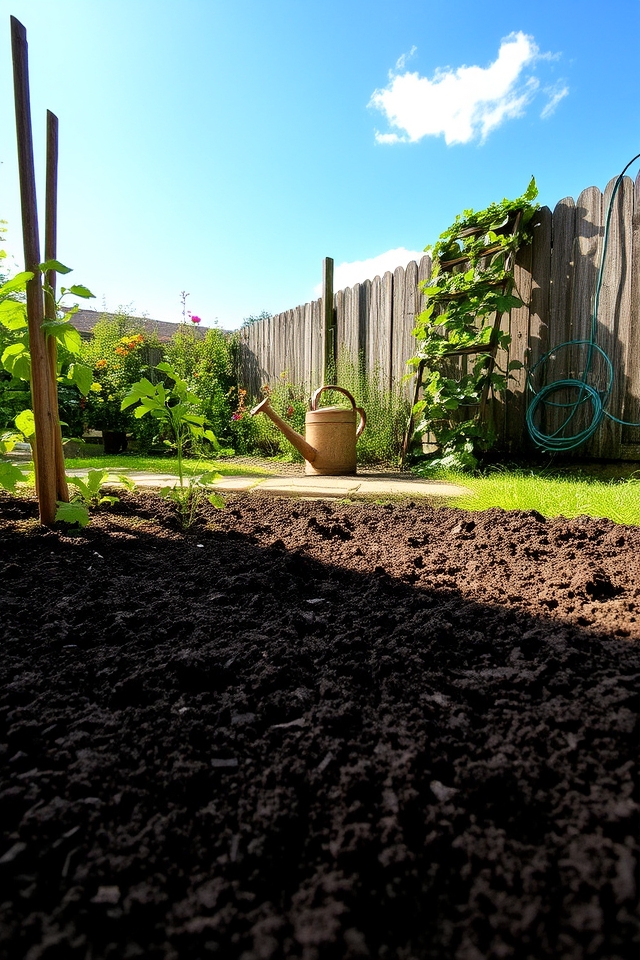
Selecting the right location for your vegetable garden is vital for successful growth. Look for an area that receives at least 6-8 hours of direct sunlight each day, as most vegetables thrive in bright light. Ascertain the spot has well-draining soil to prevent waterlogging, and consider proximity to a water source for easy irrigation. Additionally, protect your garden from strong winds and consider nearby obstacles that could create shade or competition for nutrients.
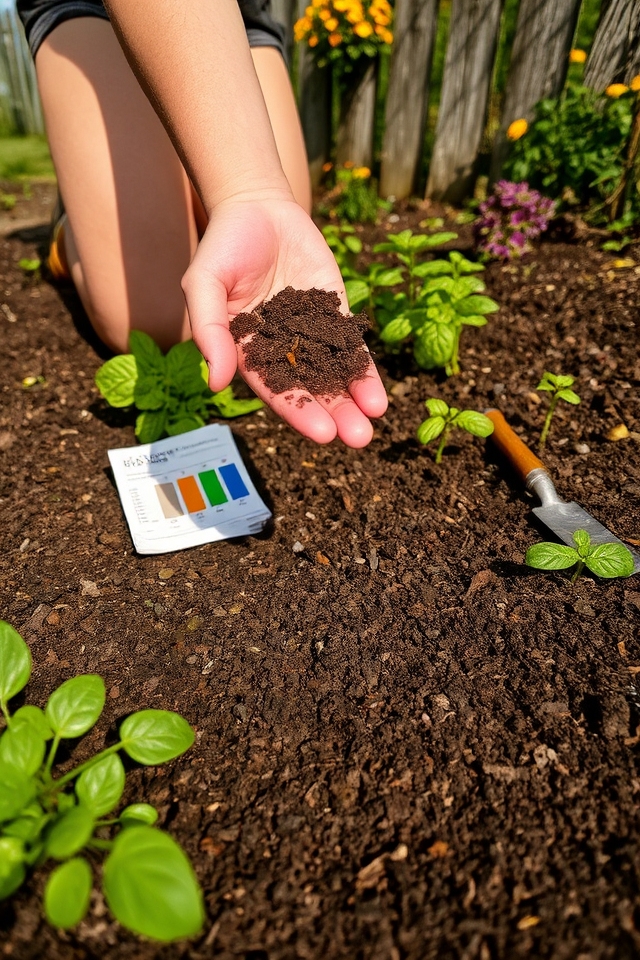
Evaluating your soil quality is an essential first step in establishing a successful vegetable garden. Begin by testing the pH levels and nutrient content of the soil, as well as its texture and drainage capabilities. A soil test kit can help you determine if your soil is too acidic or alkaline, and whether it has essential nutrients like nitrogen, phosphorus, and potassium. Improving soil quality with organic matter, such as compost, can enhance fertility and structure, leading to healthier plants and better yields.
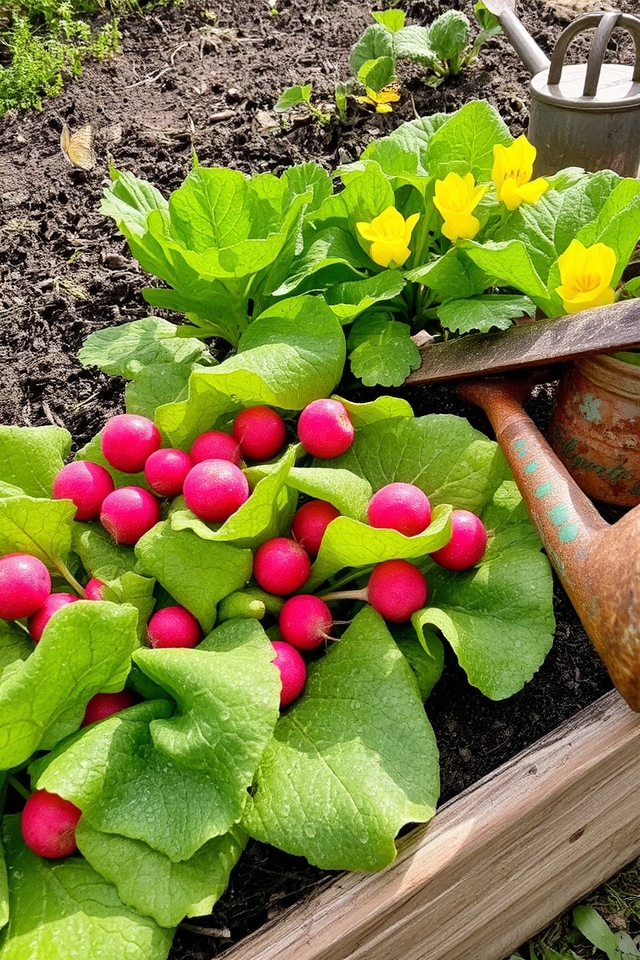
Starting your vegetable garden with easy-to-grow veggies is a smart choice for beginners. Opt for plants like radishes, lettuce, and zucchini, which thrive in most conditions and require minimal care. These vegetables germinate quickly and can often be harvested in just a few weeks, boosting your confidence as you learn the ropes of gardening. Plus, they provide delicious, fresh produce for your meals, making your gardening journey all the more rewarding. Happy gardening!
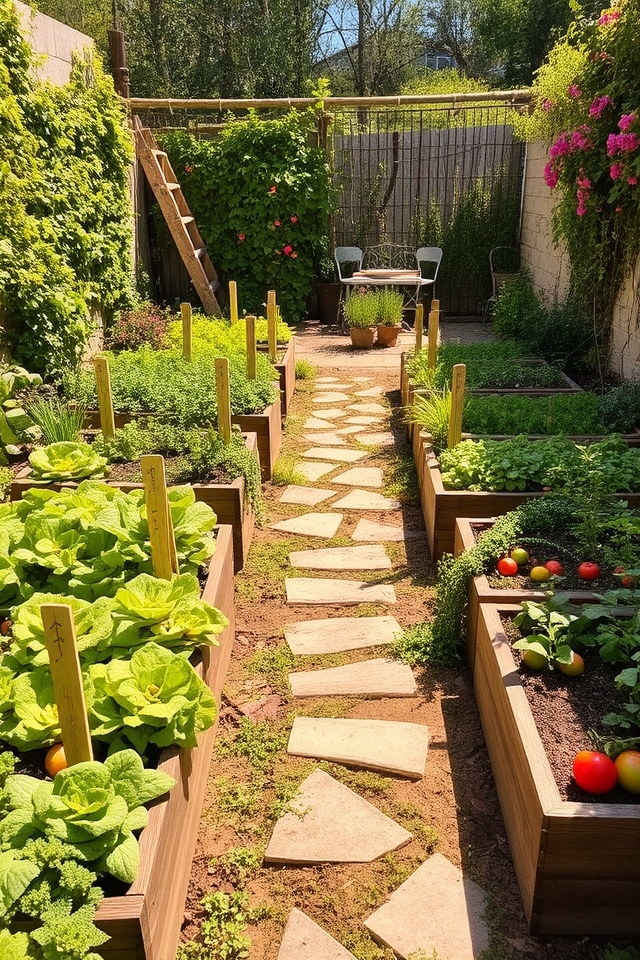
Planning your garden layout is vital for maximizing space and ensuring your plants thrive. Start by evaluating the sunlight and shade patterns in your yard to determine the best spots for sun-loving and shade-tolerant plants. Consider creating designated areas for different vegetable types, such as leafy greens, root vegetables, and trailing plants. Incorporate raised beds or vertical gardening techniques to enhance accessibility and aesthetics. A well-thought-out layout not only boosts productivity but also makes maintenance easier throughout the growing season.
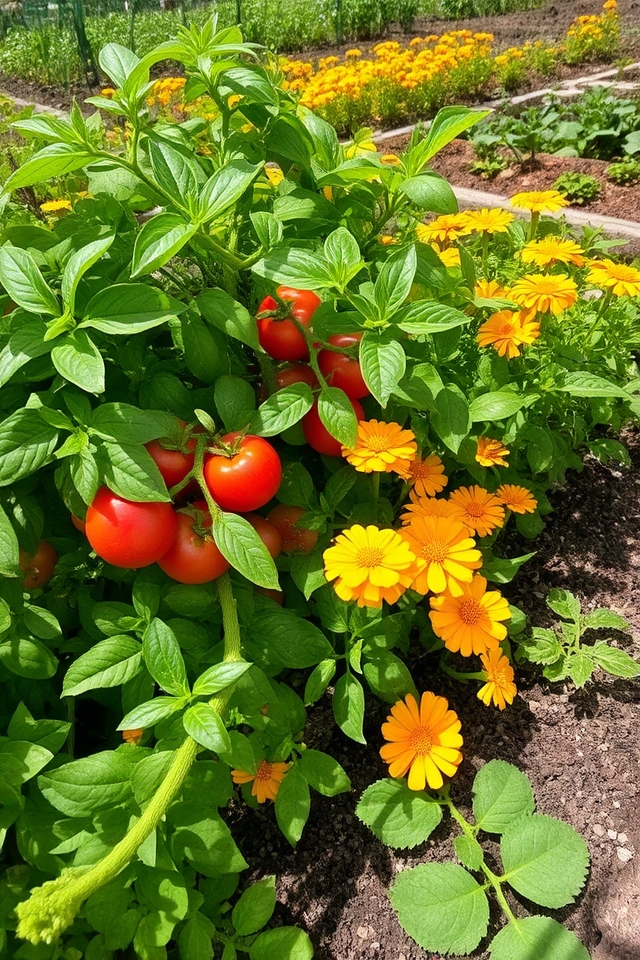
Companion planting is a strategic technique that involves growing certain plants together to enhance growth, deter pests, and improve crop yields. For instance, pairing tomatoes with basil can boost flavor and repel harmful insects, while planting marigolds alongside vegetables helps to ward off nematodes. By carefully selecting compatible plants, gardeners can create a harmonious ecosystem that benefits all species involved, leading to a healthier and more productive garden. Consider experimenting with different combinations to find what works best for your space.
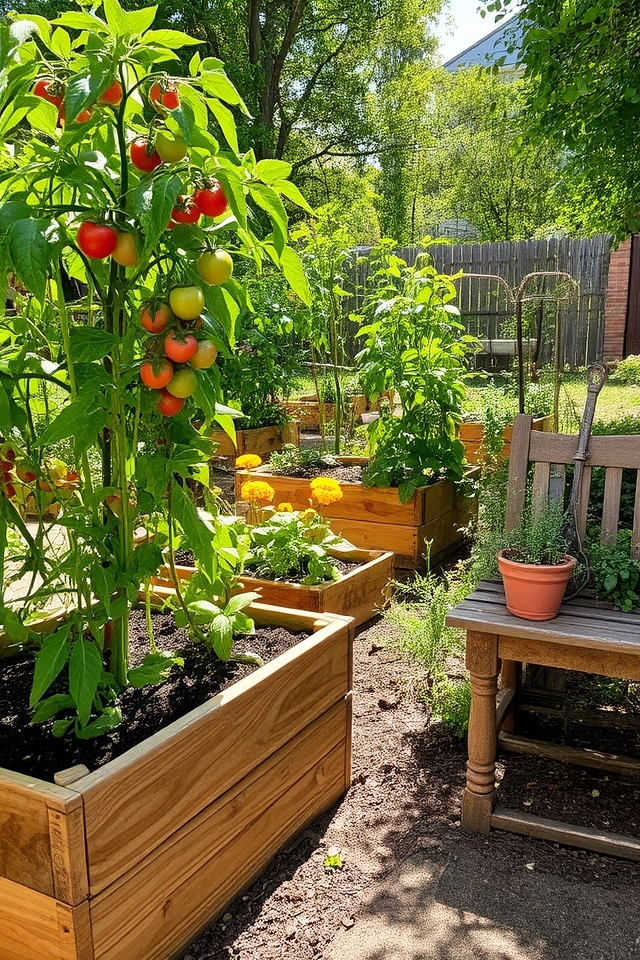
Raised garden beds offer numerous benefits for both novice and experienced gardeners. They improve soil drainage, promote better air circulation, and warm up faster in the spring, leading to an extended growing season. Elevated beds also reduce soil compaction, making it easier to cultivate and maintain your plants. Additionally, they provide a barrier against pests and weeds, while minimizing back strain during gardening activities. With customizable height and width, raised beds can be tailored to fit any space or aesthetic.
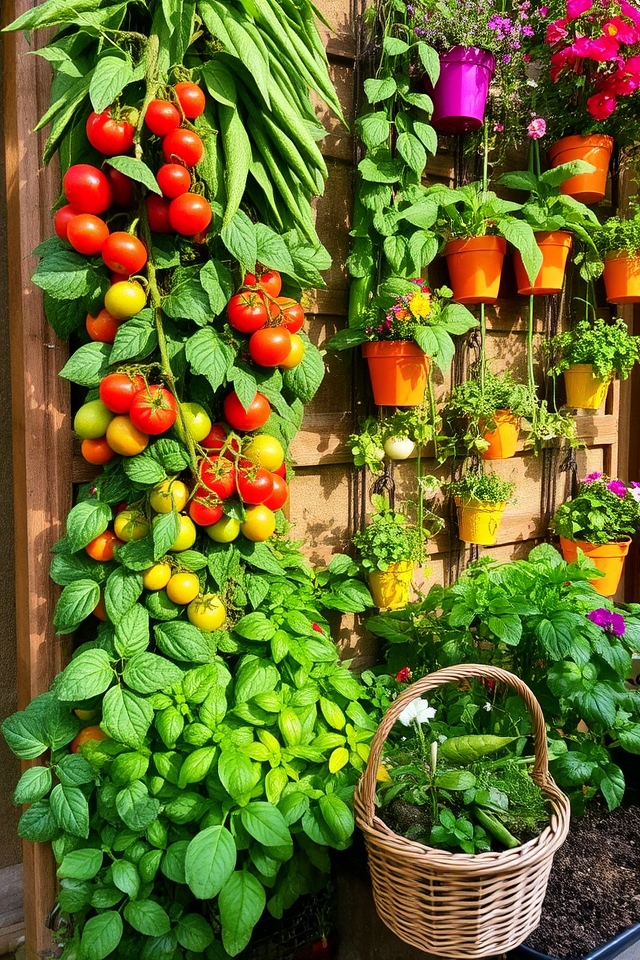
Vertical gardening is a fantastic way to maximize space and enhance your vegetable garden. By utilizing vertical structures like trellises, wall planters, and hanging pots, you can grow climbing plants such as tomatoes, cucumbers, and beans that take up minimal ground space. This method not only increases yield but also improves air circulation and reduces pest issues. Additionally, vertical gardens can add aesthetic appeal, creating a lush, green backdrop that beautifies your outdoor space while providing fresh produce.
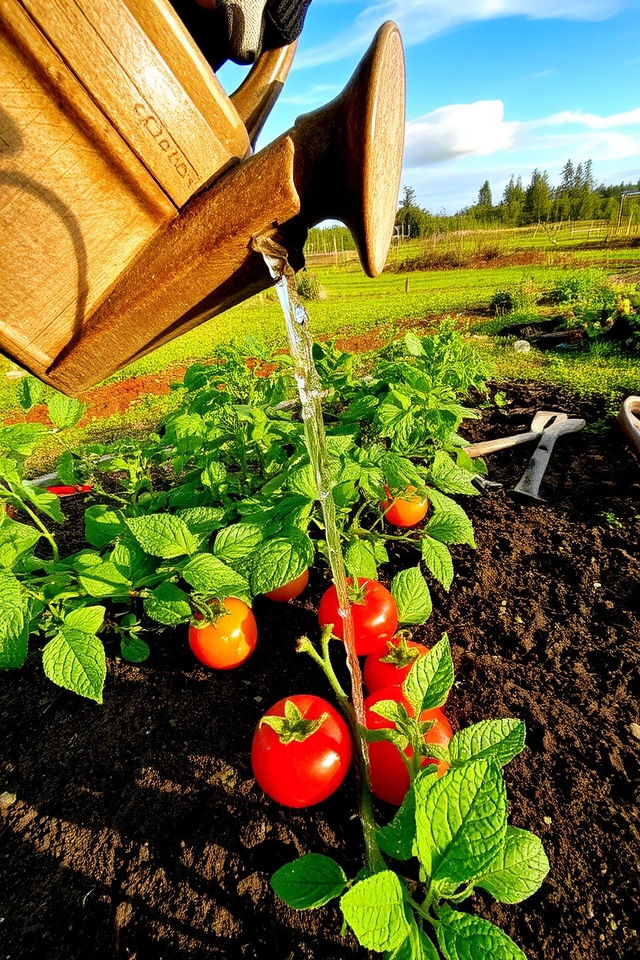
Implementing a watering schedule is essential for maintaining a healthy vegetable garden. Consistency in watering helps guarantee that plants receive adequate moisture, promoting peak growth and preventing issues like root rot or dehydration. Early mornings or late afternoons are ideal for watering, as this minimizes evaporation. Adjust the frequency based on weather conditions, plant types, and soil moisture levels. A well-planned schedule will help your vegetables thrive and yield a bountiful harvest.
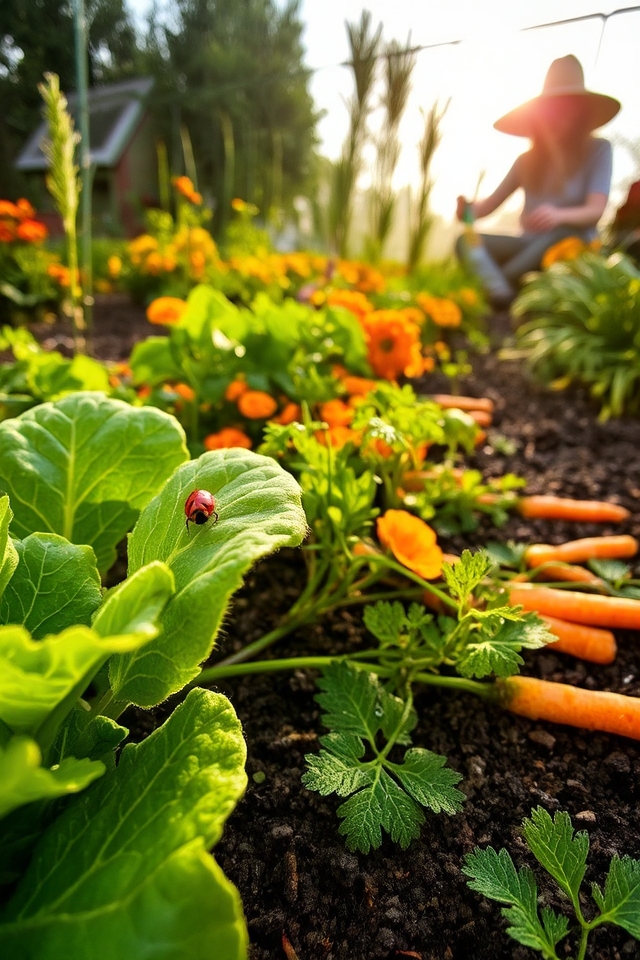
Pest management is a vital aspect of maintaining a healthy vegetable garden. It involves a combination of prevention, monitoring, and control strategies to protect your plants from harmful insects and diseases. Start by encouraging beneficial insects, like ladybugs and lacewings, which prey on pests. Implement crop rotation and companion planting to disrupt pest life cycles. When necessary, use organic methods such as neem oil or insecticidal soap to minimize harm to beneficial species and the environment while effectively managing pests.
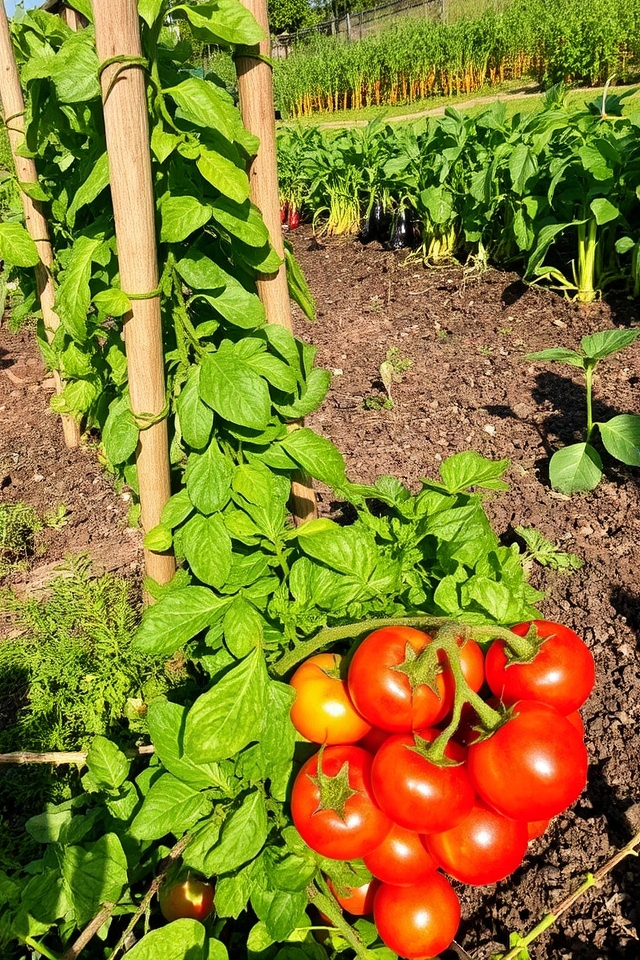
Rotating your crops is an essential practice in maintaining a healthy vegetable garden. By changing the location of specific plants each season, you can prevent pests and diseases that tend to linger in the soil. It also helps enhance nutrient use, as different plants have varied nutrient requirements and soil amendments. For instance, following heavy feeders like tomatoes with light feeders such as beans can restore balance. Aim to rotate crops in a cycle every 3-4 years for ideal results.
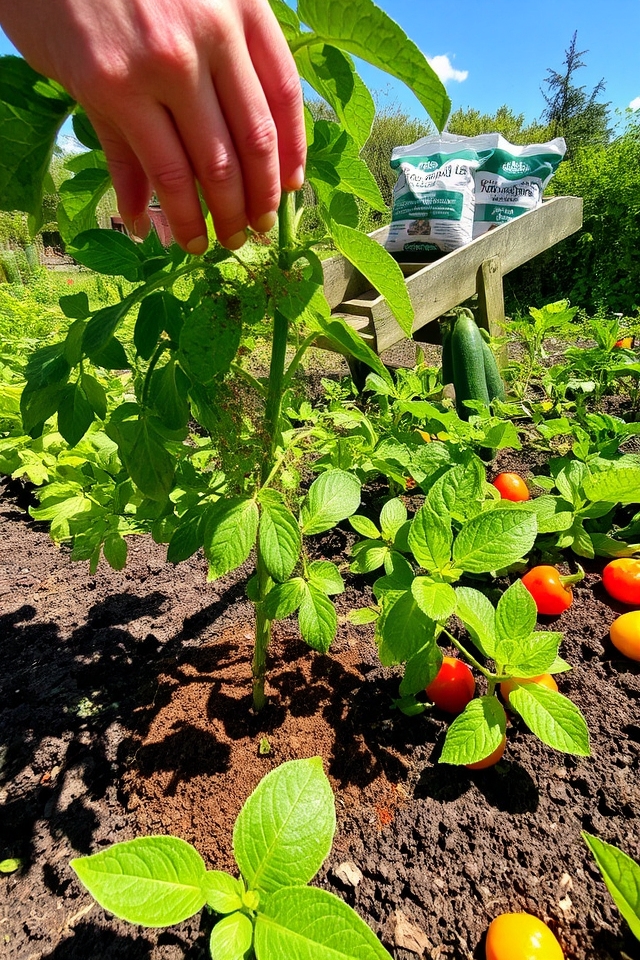
Using organic fertilizers in your vegetable garden promotes healthy plant growth while enriching the soil. These natural fertilizers, such as compost, manure, and bone meal, provide essential nutrients without harmful chemicals. They improve soil structure, enhance microbial activity, and support sustainable gardening practices. By opting for organic options, you can cultivate a thriving garden that yields delicious vegetables and maintains ecological balance, ultimately benefiting both your health and the environment.
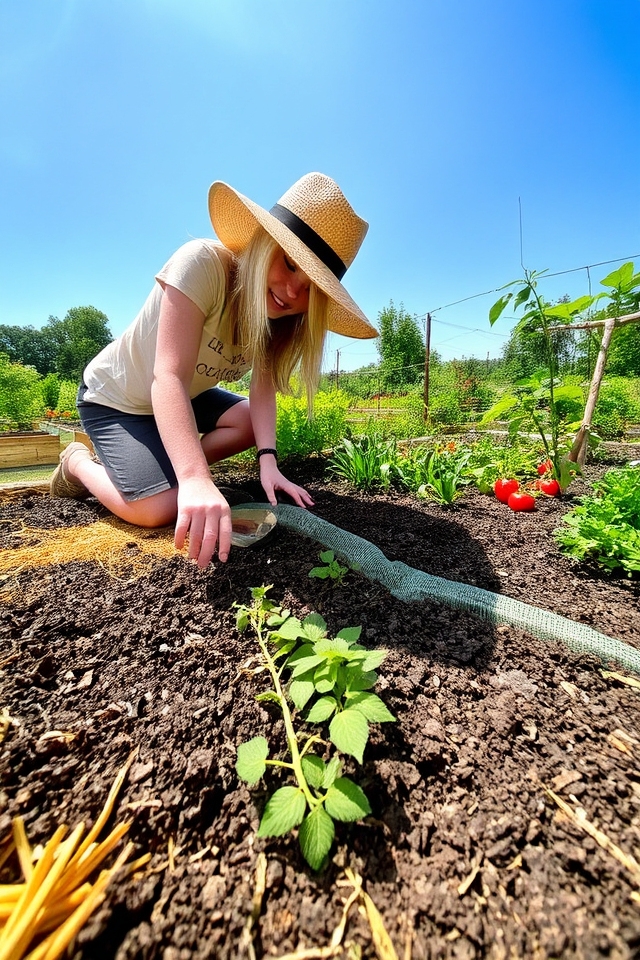
Keeping weeds under control is vital for a thriving vegetable garden. Regularly inspect your garden beds and remove weeds by hand or with a hoe before they go to seed. Applying mulch can also effectively suppress weed growth while retaining soil moisture. Consider using landscape fabric for added protection or planting densely to shade out weeds. Staying vigilant and proactive will help guarantee your vegetables get the nutrients and space they need to flourish.
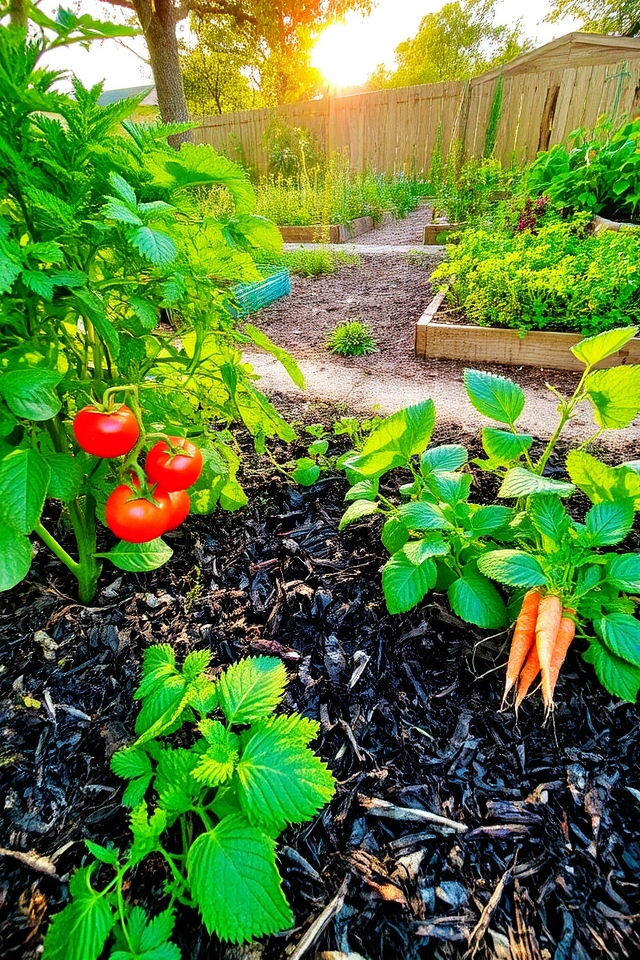
Mulching techniques are essential for maintaining a healthy vege garden. By applying a layer of organic material, such as straw, grass clippings, or shredded leaves, you can suppress weed growth, retain soil moisture, and improve soil health as the mulch breaks down. Additionally, mulch helps regulate soil temperature, protecting plants from extreme heat or cold. Regularly replenishing your mulch layer guarantees lasting benefits and promotes a thriving environment for your vegetables.
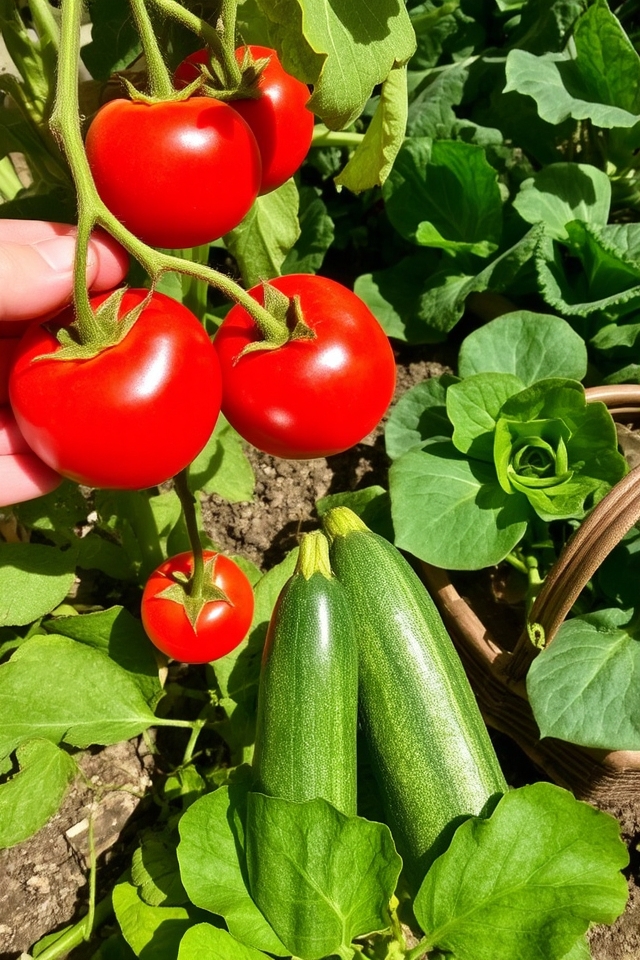
Harvesting your vegetables at the right time is essential for ideal flavor, texture, and nutritional value. Each vegetable has its own peak ripeness indicators, such as color, size, or firmness. Regularly check your plants and pick them when they reach their perfect stage. For example, tomatoes should be harvested when fully colored, while zucchini is best when small and tender. Timely harvesting not only enhances taste but also encourages more fruit production.
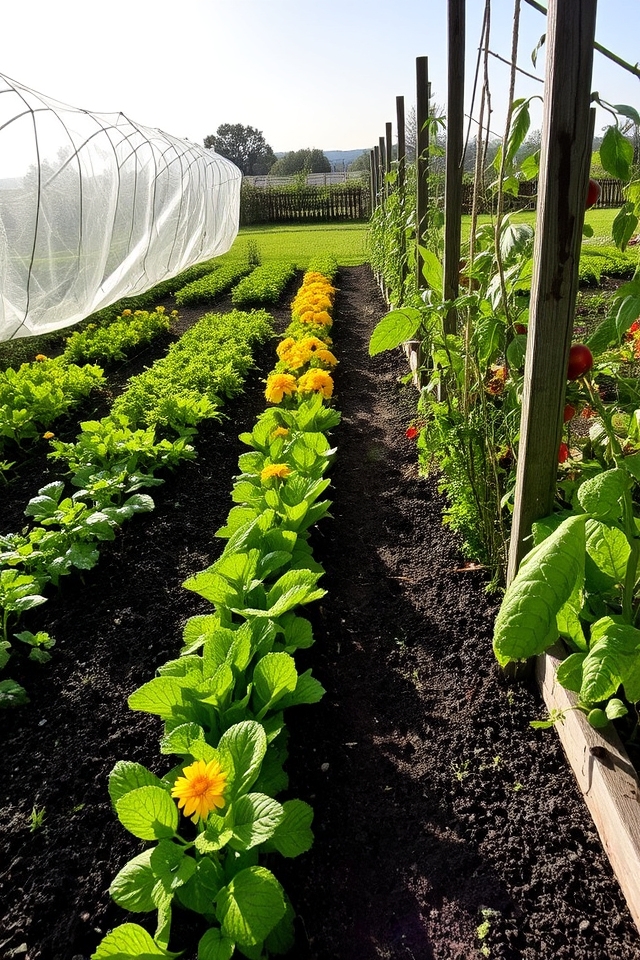
Planning for seasonal changes is vital for maintaining a thriving vegetable garden. As temperatures fluctuate and daylight hours change, understanding the needs of your plants becomes essential. Start by selecting varieties suited to your region’s climate and planting them at the right time. Utilize crop rotation to optimize soil health and prevent pest issues. Additionally, consider protective measures like row covers or cold frames to shield young plants from unexpected frost, ensuring a successful harvest throughout the growing season.
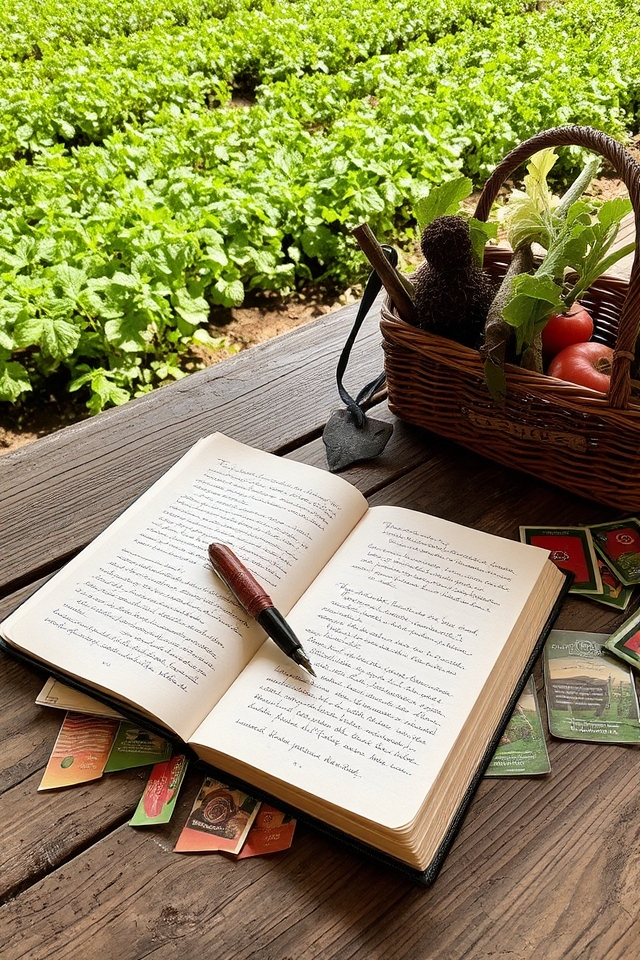
Keeping a gardening journal is an invaluable practice for any vegetable gardener. It allows you to document planting dates, weather conditions, growth patterns, and any challenges you encounter. Recording your successes and failures can help you identify what works best for your garden and improve your skills over time. Additionally, noting the harvest yields and pest issues can aid in planning for future seasons. A journal becomes a personalized reference that reflects your gardening journey and enhances your overall gardening experience.
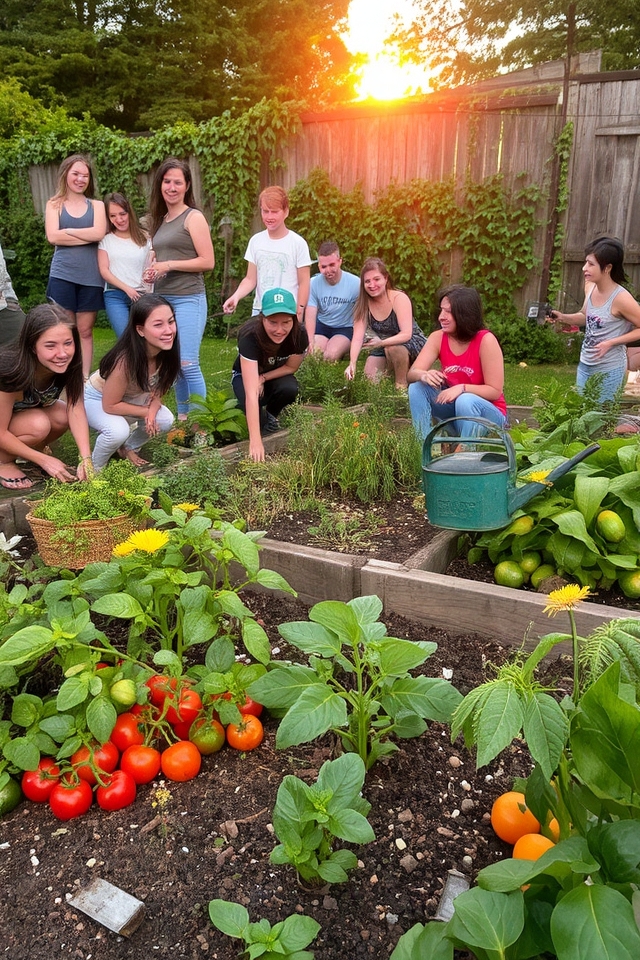
Joining a gardening community can greatly enhance your vege gardening experience. These groups provide a platform to share tips, ask questions, and exchange advice with fellow gardening enthusiasts. Whether online or in-person, connecting with others who share your passion can inspire new ideas and help you troubleshoot challenges. You’ll also benefit from their collective knowledge about regional growing conditions and local resources. Plus, it’s a wonderful way to foster friendships while cultivating your garden!
By following these 17 tips, you’ll be well on your way to creating the vegetable garden of your dreams. Remember, every gardener starts somewhere, so don’t be afraid to get your hands dirty and learn as you go. Things may not always go according to plan, but with patience, you’ll cultivate not just plants but also your gardening skills. So, dig in, be proactive, and watch your garden flourish as you reap the rewards of your hard work!

Don't let aphids, slugs, and caterpillars ruin another plant. Take back control with simple, natural methods that actually work.